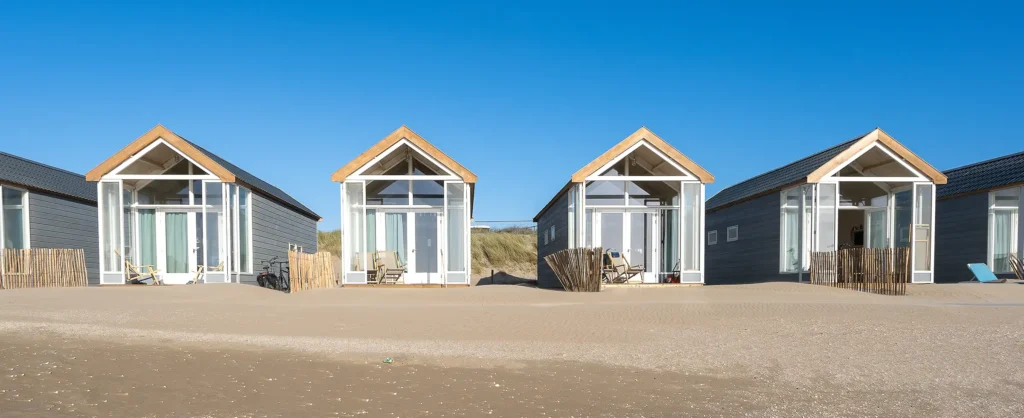The housing market has had to endure no shortage of social and economic challenges in recent years. From the domino effect of the COVID-19 crisis to 2023’s skyrocketing mortgage rates, residential housing has been repeatedly devalued and jeopardised, putting homeowners, tenants and investors alike at risk. But perhaps one of the more pressing threats to the long-term well-being and sustainability of the housing market is climate change, with carbon emissions and energy efficiency being especially relevant.
After years of denial and distraction, climate change has finally been recognised as the major threat it has always been. And yet, the full extent to which the global built environment and, by extension, residential housing, influence climate change has remained little understood and largely unaddressed. To achieve a Net Zero by 2050, the United Nations suggests that we will need to reduce global carbon emissions by a daunting 45% before 2030. As someone who has spent several years overseeing the purchase, production and evolution of sustainable social housing, I believe moderating the UK’s built environment by creating a greener residential housing market will be the lynchpin to tackling climate change. To do that, however, we will need to shift perspectives about the relationship between housing and climate change.
How Housing Impacts Climate Change
According to data from the Department for Business, Energy and Industrial Strategy (BEIS), buildings accounted for 16% of UK greenhouse gas emissions in 2021. And, though that number has fallen slightly since the lockdown, the underlying infrastructural causes behind how much buildings contribute to carbon emissions are still very much a concern.
Namely, the age of UK homes puts us at a major disadvantage when it comes to energy efficiency. Compared to the housing seen in other European countries, the UK has notoriously poor insulation. A study by Euronews revealed that the UK has the highest home temperature losses in Europe as well as the oldest housing stock, with 37% of British homes built before 1946. These findings indicate that UK homes lose heat three times faster than Norwegian and German ones, despite the UK typically experiencing warmer winters.
According to Lloyds Banking Group, improving the energy efficiency and insulation of our existing housing stock alone could save the UK 2.8 tonnes of carbon and £10 million in household energy bills per year. Although the need for retrofitting older British homes has been recognised as a necessity by climate change advocates, politicians and business leaders alike, the current progress of the Great British Insulation Scheme has only seen a meagre 5,000 older homes insulated to the same standard as new homes. This represents just 2% of its 300,000 home target. Considering that 80% of buildings built before 1930 in England and Wales are rated in the lowest energy bands of D to G, the negative implications of the lack of successful retrofitting on energy efficiency are readily apparent.
What We Can Do About Residential Carbon Emissions
According to research carried out by the Office for National Statistics (ONS), social rented dwellings had a significantly higher average energy efficiency score than their private rented sector equivalents, with a median of a C-rating across all regions of England and Wales. Despite this, over half of local authorities with an energy efficiency band of C or above were in London or the South East. This coupled with an ongoing social housing shortfall facing the UK suggests that much of our carbon commissions could be lessened if we committed to building and retrofitting more properties into social housing.
This will not only require a greater commitment to social and affordable housebuilding by the UK government but also continued support from the private sector to help meet mounting demand. As it stands, professional services firm JLL UK suggest that private capital could account for as many as one in five new affordable homes in the near future. Such a proliferation of private investment in the social housing market will be the natural result of private interest rising to meet a forecasted 10% fall in new housing supply across England.
For institutional and professional private investors, the social housing market already represents a wealth of financial and ethical investment opportunities. In 2023, global accounts showed a record level of investment in social housing repairs, maintenance and construction as the sector showed a continuing rise in liquidity and drew in more private capital. And, with a growing level of advocacy for social housing investment cropping up among industry stakeholders and influential figures this year, 2024 may be the ideal time for investors of all backgrounds to claim their stake in social housing while serving the greater, greener climate change goals of the UK.
Social Housing and Social Impact at Concept Capital Group
At Concept Capital Group, we specialise in fully managed alternative investments that offer clients an opportunity to make a unique social impact while diversifying into exciting new markets. Our social housing investment opportunity boasts all the benefits of owning buy-to-let housing without the hassle and daily maintenance associated with traditional property.
As a company, we are committed to social impact and transformative change. In addition to working with charitable organisations like the British Red Cross and the Kiwan Prince Foundation, we tailor our investment packages to accommodate major market and infrastructural gaps that negatively impact the lives of the communities we work with. When you invest with us, your money goes towards introducing a better quality of life to those in need. Together, we can fight the housing crisis and create a more sustainable future.
To find out more about investing with Concept Capital Group, book a call with our team today.













